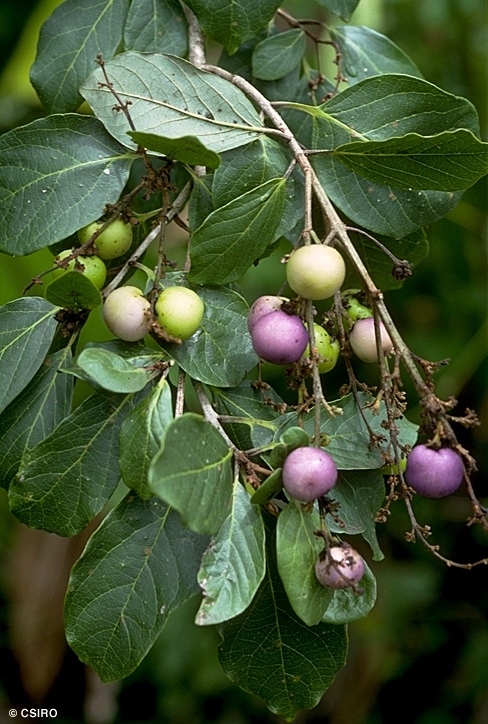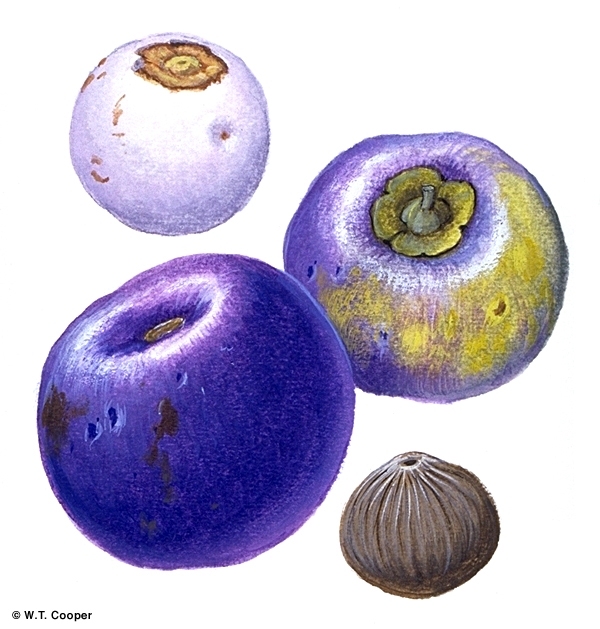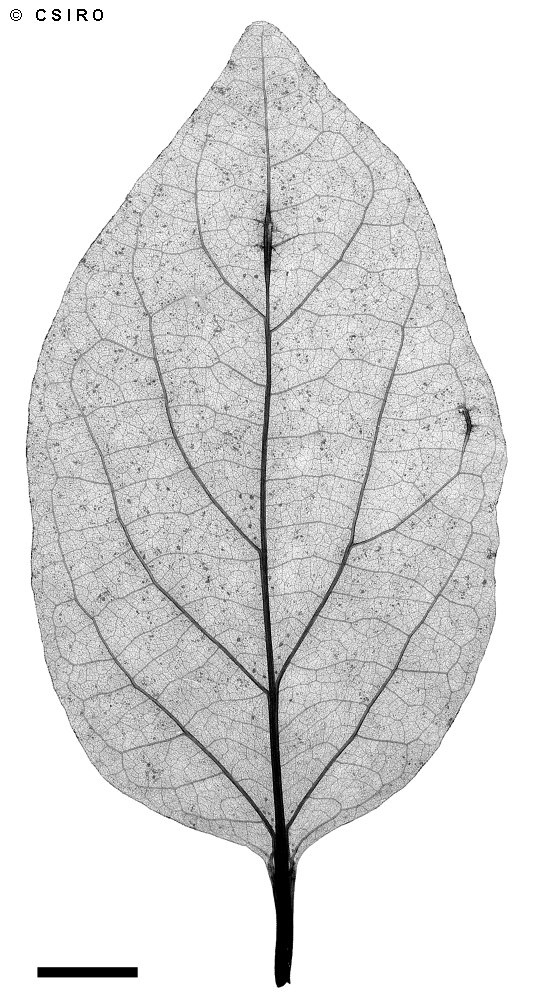Australian Tropical Rainforest Plants - Online edition
Gmelina fasciculiflora Benth.






Bentham, G. (1870) Flora Australiensis 5: 65. Type: Queensland. Rockingham Bay, Dallachy.
Beech; Beech, Northern White; Grey Teak; North Queensland White Beech; Northern White Beech; White Beech; Beech, White
Often deciduous, leafless for a period in July or August. Stem often with one flat side. Yellowish or orange flecks in the blaze.
Leaf bearing twigs square or rectangular in cross section and marked by scattered, elongated lenticels. Young shoots and terminal buds densely clothed in very short, rusty brown hairs. Leaf blades about 5-12 x 4-7 cm, much paler or whitish on the underside. Domatia if present are tufts of hairs. A few small, flat glands generally visible on the underside at the base of the leaf blade.
Cotyledons obovate, about 7-8 mm long, hairy on both the upper and lower surfaces. First pair of leaves ovate, usually without teeth. At the tenth leaf stage: leaf blade elliptic, teeth, if present, dentate and apiculate, about 1-5 on each side of the leaf blade, upper surface glabrous or with a few hairs along the midrib; petiole clothed in short, pale brown hairs. Seed germination time 62 to 168 days.
This species produces a very durable timber which has been used in high hazard areas e.g. window sills, boat decking, house stumps and fence posts. The timber is soft, easy to work and easy to cut in any direction. It has always been highly regarded as a carving timber, particularly in industry to carve patterns. Logs of this species persist in the rainforest for many years and the inner layers never seem to dry out. If dry logs can be found they make very good kindling for billy fires. In fact many billy boiling competitions have been won by using shavings and kindling from this species.
Fallen fruit eaten by Cassowaries. Cooper & Cooper (1994)
A tree that has potential for planting in parks and forms a dense rounded crown. Large mauve flowers are followed by fruits that are purple when ripe. Wood specific gravity 0.54. Cause et al. (1989).





